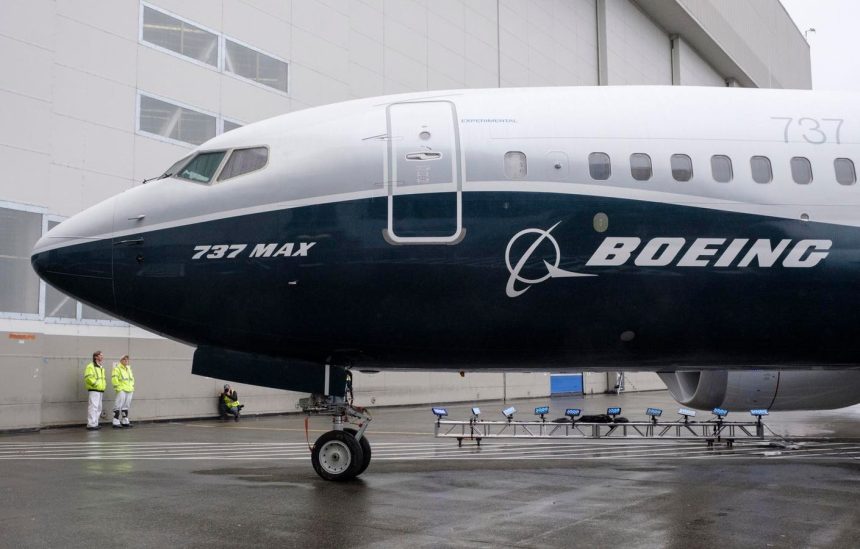The year ahead presents a critical juncture for Boeing, demanding a demonstrable turnaround to reassure stakeholders – customers, suppliers, investors, regulators, and competitors – of its resurgence. Since the initial 737 MAX crash in 2018, Boeing’s trajectory has been turbulent, marked by production disruptions, intense regulatory scrutiny, labor disputes, and a consequent ripple effect across the aviation ecosystem. The company’s struggles impacted both its supply chain and the airline industry, which faced a shortage of new aircraft amidst rising post-pandemic travel demand. While glimmers of recovery emerged in late 2022, a near-catastrophic incident involving an Alaska Airlines MAX 9 in early 2023 plunged Boeing back into crisis mode.
The Alaska Airlines incident triggered a cascade of internal upheaval, including the dismissal of the commercial aircraft unit head, the resignation of the then-CEO, and the appointment of Kelly Ortberg as the new CEO. These events unfolded against a backdrop of a month-long strike, forced layoffs, and FAA-imposed production limitations, further compounding Boeing’s challenges. The company’s stock, which once peaked at $430.19, plummeted to a 52-week low of $137.03, reflecting the market’s diminished confidence. However, Ortberg’s arrival instilled a degree of optimism, resulting in a partial stock recovery to $180 by year-end.
To stabilize its financial footing, Boeing secured over $25 billion in debt and credit, signaling its commitment to recovery. The company also indicated its willingness to divest non-core service units to bolster cash flow and reduce debt. Despite these efforts, the road to recovery remains arduous, with a gradual ramp-up of MAX production planned for 2025. Restarting the MAX production line in December 2023, after resolving the IAM strike, allowed Boeing to prioritize quality and safety enhancements. This renewed focus is crucial for regaining regulatory trust and providing much-needed stability to the supply chain.
However, revitalizing the supply chain presents a significant hurdle. The stop-and-start production cycles have created disruption, compounded by ongoing issues with component suppliers, particularly those impacting engine production. The FAA’s production cap of 38 MAX aircraft per month, coupled with the pre-strike production rate of 25 per month, presents a challenge. Boeing’s projected average production of 30 per month in 2025, increasing gradually from an initial 18 per month, necessitates consistent execution to achieve cash-flow positivity. The substantial backlog of 4,600 MAX orders, coupled with persistent industry demand, provides a potential pathway to long-term solvency, contingent on achieving consistent delivery quantities.
Despite the challenges, the MAX continues to attract orders, exemplified by a recent significant order from Turkish low-cost carrier Pegasus. This sustained demand offers a glimmer of hope amidst the prevailing difficulties. However, Boeing must also address the significant loss of experienced engineering talent, a critical resource for developing new aircraft. Many engineers have departed due to layoffs or sought opportunities in other aerospace sectors, such as space exploration and electric air vehicles. This brain drain poses a considerable threat to Boeing’s long-term innovation and competitiveness.
Adding to the pressure, competitors like Embraer are reportedly exploring the development of new aircraft to target the “middle market” segment, a space currently underserved by the MAX. Airbus has gained market share due to the popularity of its A321, which caters to this growing segment. A resurgent Boeing, demonstrating financial and operational stability, is crucial to deter such competitive threats. Bombardier’s experience with the C-Series serves as a cautionary tale, highlighting the risks of challenging industry giants without robust financial backing. Boeing’s 2018 MAX production rate of 52 per month now serves as a benchmark for its recovery. The company’s immediate goal is to achieve a sustainable production rate of around 30 per month in 2025 – approximately 40% below its peak – without compromising quality or safety. Achieving this milestone is a prerequisite for addressing the broader strategic imperatives essential for long-term success.
Beyond stabilizing production, Boeing must cultivate a forward-looking culture that attracts new talent, laying the groundwork for the development of a new aircraft, a feat it hasn’t accomplished in two decades since the 787. Streamlining management structure and processes, going beyond superficial cost-cutting measures, is also crucial for sustained efficiency. Finally, rebuilding trust with suppliers and airline customers is paramount for reclaiming lost market share. While Ortberg’s initial actions have been promising, the coming year will be the true test of his leadership and Boeing’s ability to maintain a steady upward trajectory. Further management changes and organizational restructuring are likely, but the industry collectively hopes for Boeing’s successful navigation of this critical period.



